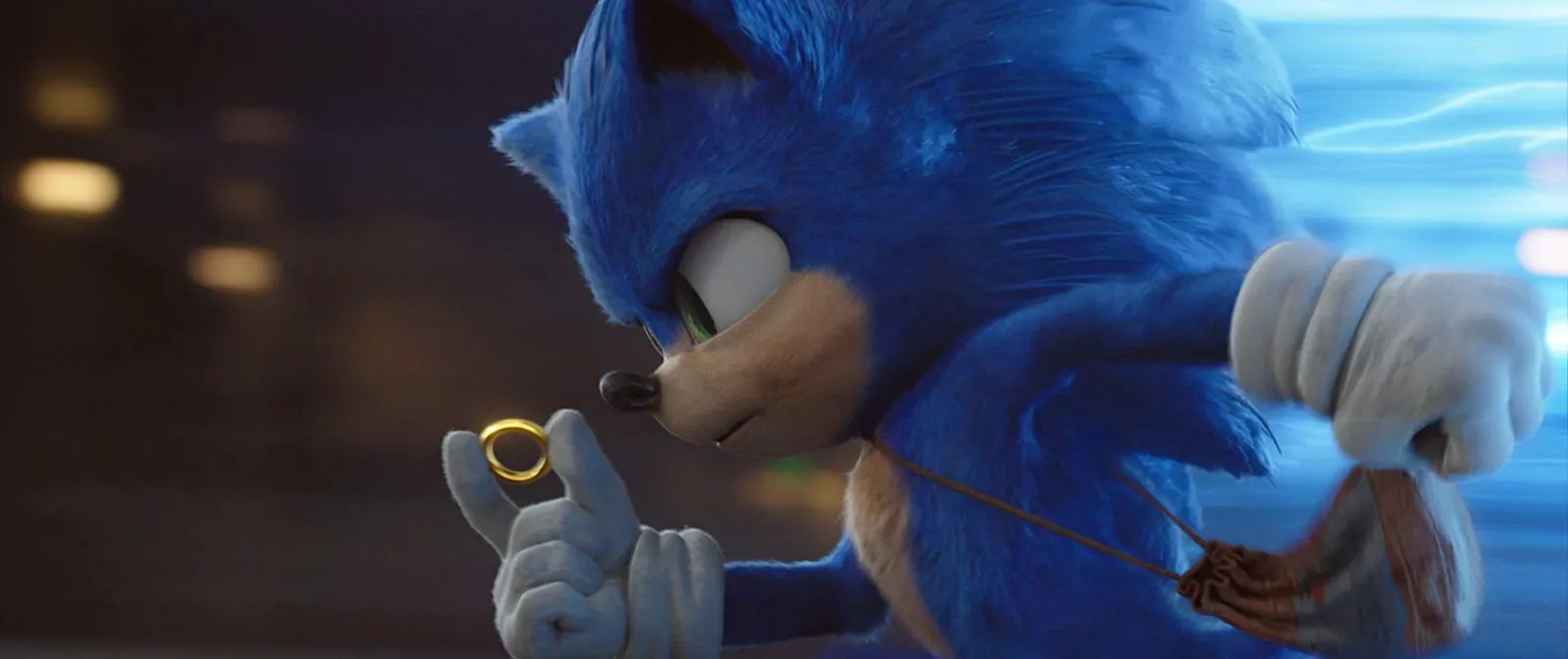Sonic the Hedgehog, a supersonic blue alien hedgehog, escapes from equally odious echidnas and ends up on Earth, where he spends the next decade living in the small American town of Green Hills. One day, like any other, he plays baseball by himself and finally realizes how lonely his existence has been for the past ten years. The hedgehog gets upset and accidentally knocks out the power for several kilometers around, after which the government becomes interested in the strange and possibly terrorist activity and sends the creepy roboticist Dr. Robotnik (Jim Carrey) to investigate.
At this time, Sonic, hiding in a barn, stumbles upon the local police sheriff Tom Wachowski (James Marsden) and, after a few words, loses his teleportation rings (they end up on the roof of one of the skyscrapers in San Francisco during a ridiculous incident). Now, the ambitious cop and the young hedgehog with a dissociative personality disorder must get to San Francisco together, while avoiding falling into Robotnik’s clutches.

“Sonic,” which has not yet reached our box office, has already made a lot of noise in its native America - the film, against all expectations, set a box office record for the first weekend among all video game adaptations. Surpassing (ha!) both the very successful “Detective Pikachu” and some “Warcraft” - with the latter, however, it was easy, considering that it didn’t earn anything in the United States.

The reason for this success, I think, is in : people remember very well how Paramount самоотверженно decided to spend extra money to fix the CGI that the audience didn’t like in the shortest possible time. This gesture - seemingly positive from all sides - generally says a lot about the film and its authors, and not in the best way. “Sonic the Hedgehog” demonstrates with all its being the intention to please everyone, so as not to upset or offend a single viewer.

A Sterile Film
This is an absolutely sterile movie, in which there is no hint of fantasy, not a single sharp angle. What’s there, there’s no angle at all - “Sonic” is streamlined, amorphous, it’s like a boggart (but not a mythical, Rowling one), adapting to each viewer, but not representing any matter at all. This may sound like a compliment - like, if so, then the film turns out to be universal - but for a universal one, it goes too superficially through the taste receptors of different generations. For the youngest, there are dances from Fortnite, for their parents - Jim Carrey, grimacing like in his best years. Indeed, by the way, wildly charismatic: it’s a shame that he chose a movie that is as unworthy of it as possible for his comic comeback.

The Core Idea
This intention is betrayed even by the ideological core: another ode to friendship and the importance of family, sung by the film without any regard for the fact that its script does not support its main idea in any way. “Sonic the Hedgehog” is the worst manifestation of Hollywood commerce in its pure, soulless form. It will sound strange, but the worst thing about the film is that it’s not even bad. It is tolerable enough to easily collect money from parents and their children, justifying any stupidity and banality with the mantra “well, the film is for children!”, forgetting that both Pixar and Ghibli are also, in general, for children. And what about Pixar, “Detective Pikachu” was also for children, and this did not prevent him from being not stupid (or, at least, not so stupid) and a very plastically talented film.
The Epidemic of Passable Films
“Sonic” is made just talented enough not to be technically and cinematographically backward. This is an excellent example of what video essayist Nerdwriter called “the epidemic of passable films” - a movie made according to the template of its predecessors (in this case, obviously, Spielberg’s “E.T.” and all similar films) and exploiting the audience’s love for familiar stories, characters and clichés. It would be better, honestly, if video game adaptations were still made by Uwe Boll: he certainly had plenty of sharp angles.